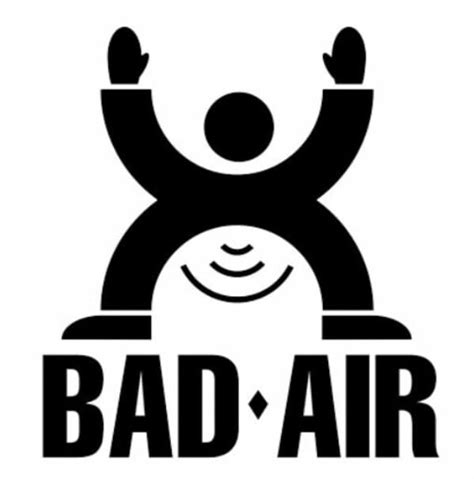
A collection of 31 remarkably flawed logos, compiled by users online, are generating widespread amusement and raising questions about the approval processes behind their creation. The logos, showcasing unintended and often inappropriate imagery through unfortunate design choices, have become viral sensations, prompting discussions about the importance of thorough review and the potential for costly branding mistakes.
The internet is awash with examples of branding gone wrong, and a recent compilation of 31 logos has ignited a fresh wave of laughter and disbelief. Shared widely across social media platforms, these logos demonstrate a range of design mishaps, from unintentional double entendres to outright offensive imagery. The collection has sparked a debate about the approval processes within companies and organizations, leading many to wonder how such glaring errors could have been overlooked.
The problematic logos showcase a variety of design flaws. Some suffer from poor kerning, where the spacing between letters creates unintended words or phrases. Others feature unfortunate juxtapositions of shapes and colors that result in suggestive or offensive images. Still others simply fail to convey the intended message of the organization, instead creating confusion or ridicule.
“Help, I’m dying laughing,” reads the title of the original compilation, reflecting the general sentiment of online viewers. The logos represent a cautionary tale for businesses and organizations, highlighting the critical importance of investing in professional design services and implementing rigorous review procedures. A poorly designed logo can not only damage a company’s reputation but also lead to costly rebranding efforts.
The collection includes logos from a variety of sectors, ranging from healthcare to education to retail. The mistakes are not limited to small or obscure organizations; some logos belong to relatively well-known entities, making the errors all the more baffling.
One particularly egregious example features a logo for a dance studio that, due to the positioning of the dancers’ limbs, creates a highly suggestive image. Another depicts a logo for a children’s clothing brand that, through an unfortunate combination of shapes, resembles a swastika. A third example showcases a logo for a dental clinic where the tooth graphic bears an uncanny resemblance to a phallic symbol.
The widespread sharing of these logo fails underscores the power of social media to amplify both successes and failures in the branding world. In an era where consumers are quick to share their opinions and experiences online, companies must be especially vigilant about ensuring that their branding is not only visually appealing but also appropriate and free from unintended interpretations.
The cost of a logo redesign can be significant, ranging from a few thousand dollars for a simple refresh to hundreds of thousands for a complete overhaul. Beyond the direct financial costs, a failed logo can also damage a company’s reputation, erode consumer trust, and negatively impact sales.
Many branding experts emphasize the importance of conducting thorough market research and testing before launching a new logo. This includes gathering feedback from target audiences, conducting focus groups, and analyzing the logo’s performance across various platforms and media. It also involves conducting a comprehensive trademark search to ensure that the logo does not infringe on the rights of other organizations.
The 31 logo fails serve as a stark reminder that even seemingly small design choices can have significant consequences. They highlight the need for businesses and organizations to prioritize quality design, implement rigorous review processes, and remain vigilant about potential unintended interpretations. In the age of social media, a single logo fail can quickly become a viral sensation, leading to widespread ridicule and lasting damage to a brand’s reputation.
The internet community’s reaction to these logos ranges from amusement to disbelief. Many commenters express surprise that these designs made it through the approval process, while others offer their own interpretations of the unintended imagery. The overall sentiment is that these logos represent a significant lapse in judgment and a failure of quality control.
The story of these logo fails also underscores the importance of cultural sensitivity in branding. What may be considered acceptable in one culture may be offensive or inappropriate in another. Companies operating in global markets must be particularly careful to ensure that their logos are culturally appropriate and do not inadvertently offend or alienate potential customers.
Several design principles are commonly violated in these logo fails. These include the principle of simplicity, which states that a logo should be easy to understand and remember; the principle of scalability, which states that a logo should look good at any size; and the principle of memorability, which states that a logo should be distinctive and easily recognizable.
The prevalence of logo fails also highlights the challenges that businesses face in navigating the complexities of modern branding. In an era of visual clutter and information overload, it is more important than ever for companies to create logos that are not only visually appealing but also memorable, meaningful, and appropriate.
The design process for a successful logo typically involves several stages, including research, brainstorming, sketching, refinement, and testing. Each stage is critical to ensuring that the final logo is effective and appropriate. The logo fails suggest that in many cases, these stages were either skipped or inadequately executed.
The examples provided in the compilation also raise questions about the role of feedback in the design process. It is likely that the designers of these logos received feedback from clients or colleagues at some point, but for whatever reason, the problematic aspects of the designs were not addressed.
The impact of a bad logo can extend beyond mere embarrassment. It can also affect employee morale, as employees may feel ashamed to be associated with a company that has a poorly designed logo. Furthermore, a bad logo can make it more difficult for a company to attract and retain customers, as consumers may perceive the company as unprofessional or incompetent.
The 31 logo fails serve as a valuable lesson for businesses and organizations of all sizes. They demonstrate that investing in quality design is not a luxury but a necessity, and that careful attention to detail is essential to avoiding costly and embarrassing branding mistakes. They highlight the importance of considering all possible interpretations of a logo and seeking feedback from a diverse range of perspectives. They serve as a reminder that in the world of branding, a picture is worth a thousand words, and a poorly designed logo can speak volumes about a company’s competence and professionalism. The cost of prevention is invariably less than the cost of remediation.
These logo missteps exemplify the high stakes involved in visual communication. A well-executed logo can build brand recognition, foster customer loyalty, and convey a company’s values. Conversely, a poorly designed logo can undermine these efforts, creating confusion, mistrust, and even ridicule.
Many experts advise companies to involve multiple stakeholders in the logo approval process, including marketing professionals, designers, and representatives from different departments. This helps to ensure that the logo is aligned with the company’s overall brand strategy and that it resonates with a broad range of audiences. It also increases the likelihood that potential problems will be identified before the logo is launched.
The saga of these logo fails underscores the importance of continuous monitoring and adaptation in the branding world. A logo that is effective today may become outdated or inappropriate tomorrow. Companies must be willing to revisit their branding strategies periodically and make adjustments as needed to remain relevant and competitive.
Moreover, these unfortunate branding incidents serve as a reminder of the subjective nature of design. What one person perceives as clever or innovative, another may find offensive or confusing. Navigating these subjective perceptions requires careful research, thoughtful consideration, and a willingness to listen to diverse perspectives.
The digital age has amplified the impact of branding mistakes. Social media enables consumers to share their opinions and experiences with unprecedented speed and reach. A single logo fail can quickly become a viral sensation, reaching millions of people around the world. This makes it more important than ever for companies to get their branding right the first time.
Ultimately, the story of the 31 logo fails is a story about the importance of attention to detail, the power of perception, and the high stakes involved in visual communication. It is a story that should serve as a cautionary tale for businesses and organizations of all sizes, reminding them that in the world of branding, even the smallest mistake can have significant consequences. It highlights the need for businesses to invest in professional design services and implement rigorous review procedures to avoid costly and embarrassing branding mistakes. The widespread sharing of these logo fails underscores the power of social media to amplify both successes and failures in the branding world.
The key takeaway from these examples is that effective logo design requires a combination of creativity, technical skill, and critical thinking. It is not enough to simply create a visually appealing image; the logo must also be appropriate, memorable, and free from unintended interpretations. It is an investment that, when done correctly, will pay dividends for years to come.
Frequently Asked Questions (FAQ):
-
What are some common reasons why logos fail?
Logos often fail due to poor kerning (letter spacing), unfortunate juxtapositions of shapes and colors leading to unintended imagery, failure to convey the intended message, cultural insensitivity, violation of design principles (simplicity, scalability, memorability), inadequate research, skipping design stages, lack of feedback or ignoring critical feedback during the design process, and not involving multiple stakeholders in the approval process.
-
What are the potential consequences of a bad logo for a company?
A bad logo can damage a company’s reputation, erode consumer trust, negatively impact sales, affect employee morale (employees feeling ashamed), make it difficult to attract and retain customers, lead to costly rebranding efforts (ranging from a few thousand to hundreds of thousands of dollars), and result in widespread ridicule on social media.
-
How can companies avoid creating problematic logos?
Companies can avoid problematic logos by investing in professional design services, implementing rigorous review procedures, conducting thorough market research and testing (gathering feedback from target audiences, conducting focus groups), ensuring cultural sensitivity, involving multiple stakeholders in the approval process, conducting comprehensive trademark searches, adhering to design principles (simplicity, scalability, memorability), and continuously monitoring and adapting branding strategies.
-
What design principles are most often violated in logo fails, and why are they important?
Commonly violated design principles include simplicity (easy to understand and remember), scalability (looks good at any size), and memorability (distinctive and easily recognizable). These principles are crucial because they ensure the logo is easily identifiable and leaves a lasting impression on consumers. A complex or poorly scalable logo can be confusing and ineffective.
-
What role does social media play in the success or failure of a logo?
Social media plays a significant role by amplifying both successes and failures. Positive feedback on a well-designed logo can quickly spread, boosting brand recognition and loyalty. Conversely, a logo fail can become a viral sensation, leading to widespread ridicule and lasting damage to a brand’s reputation due to the ease and speed with which consumers can share their opinions and experiences online. This underscores the need for vigilance and careful design consideration.
-
What kind of cost we can expect on logo redesign?
The cost of a logo redesign can vary significantly, ranging from a few thousand dollars for a simple refresh to hundreds of thousands for a complete overhaul, depending on the complexity of the design and the scope of the rebranding effort.
-
What is the impact of continuous monitoring and adaption to the branding world?
Continuous monitoring and adaptation in the branding world is important as a logo that is effective today may become outdated or inappropriate tomorrow. Companies must be willing to revisit their branding strategies periodically and make adjustments as needed to remain relevant and competitive.
-
What steps are involved in logo design process?
The design process for a successful logo typically involves several stages, including research, brainstorming, sketching, refinement, and testing. Each stage is critical to ensuring that the final logo is effective and appropriate.
-
What is the suggestion for involving multiple stakeholders in the logo process?
Many experts advise companies to involve multiple stakeholders in the logo approval process, including marketing professionals, designers, and representatives from different departments. This helps to ensure that the logo is aligned with the company’s overall brand strategy and that it resonates with a broad range of audiences.
-
Is it possible that some people percieve clever and innovative design that might be offensive or confusing to the rest?
Yes, it’s entirely possible. The saga of these logo fails underscores the importance of continuous monitoring and adaptation in the branding world. Navigating these subjective perceptions requires careful research, thoughtful consideration, and a willingness to listen to diverse perspectives.









